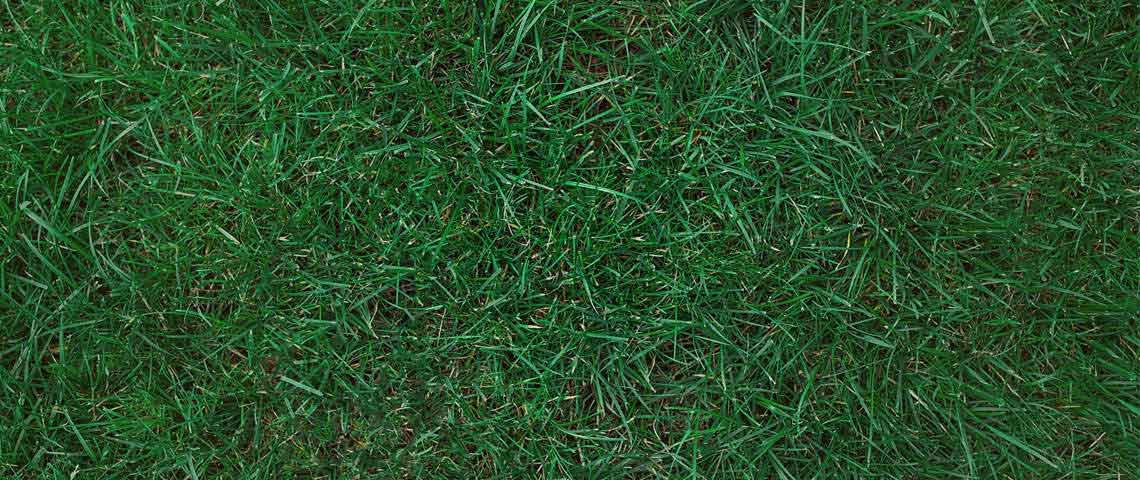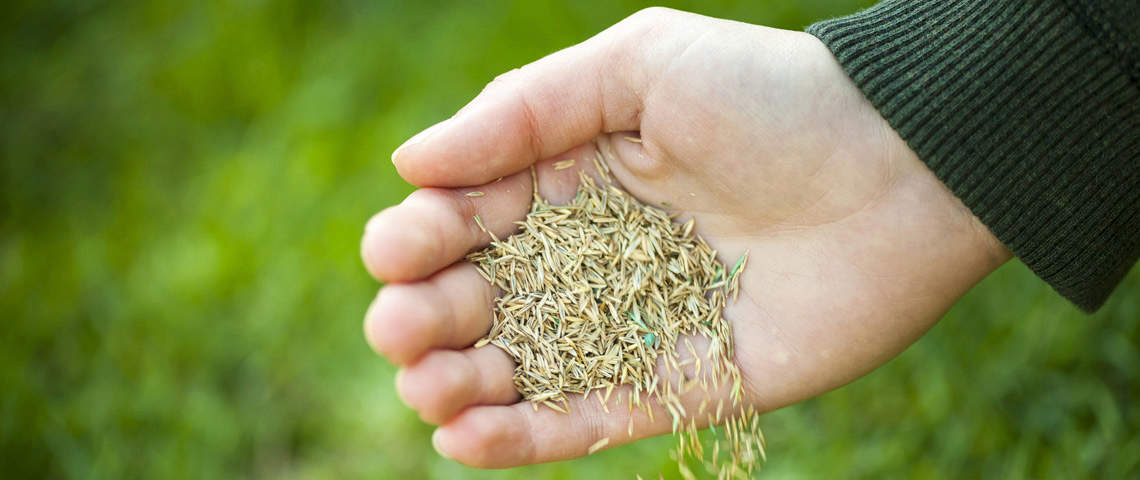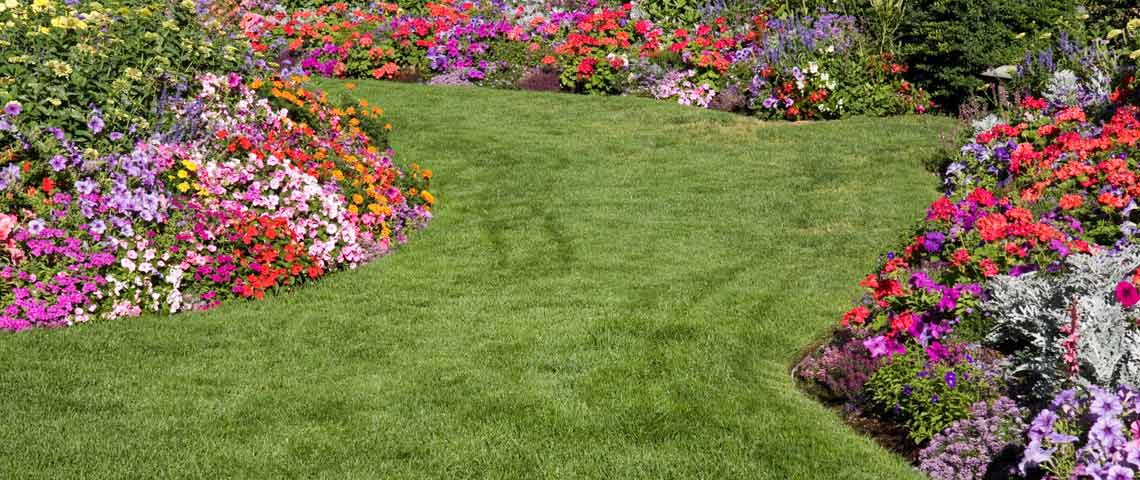All You Need to Know About Kentucky Bluegrass
For many lawn owners in the United States, Kentucky bluegrass is synonymous with the ideal lawn. When given its preferred growing conditions and proper care, this grass produces a dense, lush, durable lawn that lives up to its reputation. However, Kentucky bluegrass doesn't do it on its own. This grass requires a relatively high level of maintenance to look its best, but results can be worth it. Depending on your grass-growing region and your lawn care goals, Kentucky bluegrass may be a perfect choice for you.
- Kentucky Bluegrass at a Glance
- Kentucky Bluegrass Basics
- Additional KBG Characteristics to Consider
- Kentucky Bluegrass Lawn Care Calendar
Kentucky Bluegrass at a Glance
- Cool-season lawn grass.
- Suitable for northern lawns from coast to coast.
- Excellent winter hardiness.
- Some varieties susceptible to heat and drought.
- Limited shade tolerance.
- Excellent capacity for self-repair.
- Some varieties vulnerable to stress damage.

Kentucky bluegrass gained early U.S. popularity as a pasture grass in Kentucky.
Kentucky Bluegrass Basics
The state of Kentucky lays claim to the nickname "Bluegrass State," but Kentucky bluegrass didn't originate there. Like many common U.S. turf grasses, this versatile, widely used grass is native to Europe and northern Asia.1 Its first use in the U.S. came as a pasture grass in states like Kentucky, where it still covers the state's gently rolling hills. Often referred to in the grass industry by the initials KBG, Kentucky bluegrass rose to become a premier lawn grass throughout much of the country.
Kentucky bluegrass is what's known as a perennial, cool-season lawn grass. This means it comes back year after year and grows most vigorously during the cool seasons of fall and spring. KBG has the greatest cold hardiness of all the common cool-season U.S. lawn grasses.2 It's used most extensively in northern climates where moderately warm summers and cold winters align with its natural preferences and growth cycle.
Compared to tall fescue, traditional Kentucky bluegrass varieties have relatively shallow roots, which typically mean a lower tolerance for heat and drought. Historically, this restricted the widespread use of KBG south of the challenging transition zone where higher heat and humidity favor warm-season grasses, such as Zoysia grass. Even so, KBG admirers in warmer areas aren't deterred easily. It's not uncommon to find heavily irrigated Kentucky bluegrass growing in the sun-baked lawns of the West and Southwest.
Premium, water-conserving seed products such as Pennington Smart Seed Kentucky Bluegrass Grass Seed and Fertilizer Mix can add to your lawn's resilience. Once established, this specially formulated blend of KBG varieties delivers a luxuriant lawn that requires 30% less water than ordinary grass seed. Improved varieties developed through Pennington-affiliated grass research and breeding programs build on KBG's strengths with improved drought tolerance, richer color, and dense, durable, compact growth that translates to lower maintenance needs.

Kentucky bluegrass blades have distinctive, boat-like tips.
Additional KBG Characteristics to Consider
Kentucky bluegrass establishes easily from seed, but it germinates more slowly than some other cool-season grasses. Fast-growing perennial ryegrass, for example, germinates in one-third the time of KBG. Unlike bunch-forming grasses, such as tall fescue and ryegrass, Kentucky bluegrass is a self-spreading, sod-forming grass. Once established, it spreads readily via underground stems known as rhizomes to form a dense, thick turf. This aggressive growth habit gives KBG the capacity to recuperate quickly from damage.
Part of the charm of a healthy Kentucky bluegrass lawn is its rich emerald to blue-green color. Add its medium to fine texture, and a KBG lawn is both beautiful to look at and comfortable for bare feet. As with other cool-season grasses, Kentucky bluegrass growth slows significantly during hot summer months. During extreme heat or extended drought, the grass will go dormant. However, it recovers quickly with irrigation and a return to normal conditions.
Kentucky bluegrass prefers full sun, but some varieties can do well in lightly shaded areas. Look on the seed tag label of many grass seed mixes, including shade and sun-and-shade mixes, and you'll find KBG varieties alongside other cool-season grasses. Fast-greening perennial ryegrass and shade-tolerant fescues complement Kentucky bluegrass' strengths to create versatile, lush, cool-season lawns. Durable KBG is also a regular component of seed mixes for athletic fields and active northern lawns.

Well-maintained Kentucky bluegrass develops into a thick, lush lawn.
Kentucky Bluegrass Lawn Care Calendar
The best time to plant Kentucky bluegrass and do major lawn maintenance is during early fall as cool-season KBG growth peaks. This is the optimal time for KBG germination, establishment and repair. To keep your KBG at the peak of beauty and performance, time your lawn care tasks to complement its seasonal cycles.
Weather conditions are often predictable in the northern regions where KGB thrives. Winter's arrival and departure shift from year to year, so let your lawn be your guide. The farther north you live, the earlier fall tasks begin. Check with your local county extension agent about typical frost dates for your area if you're unsure. Then follow this Kentucky bluegrass lawn care calendar for a beautiful, lush lawn.

When allowed to flower, Kentucky bluegrass has a panicle-like seed head.
MARCH THROUGH MAY
Mowing
Start mowing your KBG lawn as soon as it starts growing. Mow to maintain a height of 2 to 2 1/2 inches during cool spring weather. Snow mold often attacks KBG lawns. Bag the season's first lawn clippings to discourage winter-related lawn disease.
Weed Prevention and Fertilization
Prevent new weeds, fight existing ones, and feed your established KBG lawn in early spring with Pennington Full Season Weed & Feed with Crabgrass Control 25-0-8. Apply this preemergent before crabgrass starts germinating — that happens as soil temperatures hit 55 degrees Fahrenheit. Do not treat seeded or overseeded areas until at least 60 days after seeding.
Seeding and Overseeding
Kentucky bluegrass germinates best when soil temperatures range between 50°F and 65°F. That typically corresponds to daytime air temperatures of 60°F to 75°F. Pennington Smart Seed Kentucky Bluegrass Grass Seed and Fertilizer Mix's fertilizer-enhanced seed coat technology speeds establishment and promotes greener grass.
Bare Spot Repair
Fix bare and brown lawn spots in KBG lawns with Pennington Smart Patch II Sun & Shade Mix. Used as directed under correct conditions and you'll see growth in as little as 5 days and full results as soon as 14 days.
To target existing weeds wait until your established KBG lawn is actively, then apply Pennington Full Season Weed & Feed with Crabgrass Control 25-0-8 in late-spring. Avoid treating newly seeded areas until new grass establishes and you mow it at least three times. After treatment, wait at least three weeks before reseeding.
Watering
Wise water management is essential for Kentucky bluegrass lawns. A typical KBG lawn needs at least 1 inch of water weekly from irrigation or rainfall during normal weather.
JUNE THROUGH AUGUST
Mowing
During periods of high heat and lower rainfall, increase KBG mowing heights to 3 to 4 inches. Never remove more than one-third of the blade in a single mowing.
Fertilization
Kentucky bluegrass lawns typically require more fertilizer than tall fescue grasses. Fertilize your summer lawn with a split applications of Pennington Full Season Lawn Fertilizer 32-0-5. The added iron helps maintain KBG's beautiful emerald color.
Watering
During hot summer weather, especially in the transition zone, KBG may need 2 inches or more water per week to avoid going dormant in summer. KBG has relatively shallow roots compared to tall fescue and warm-season grasses. Deep, thorough watering encourages deep root growth.
Pest Control
Control grubs, chinch bugs, billbugs and other lawn pests — above and below ground — with Sevin Insect Killer Lawn Granules. One application lasts up to three months.
Soil Testing
In alkaline soils, pH-induced iron deficiency can turn KBG pale green. Regular soil testing every three to four years can help you maintain a healthy pH balance and rich KBG color. The optimal soil pH for KBG lawns is near 5.8 to 7.0.3
SEPTEMBER THROUGH NOVEMBER
Mowing
As cool fall nights arrive, gradually decrease KBG's mowing height to 2 to 2 1/2 inches. Continue mowing until your grass stops growing.
Weed Control and Fertilization
Six to eight weeks before your area's first expected frost, prepare KBG for winter. Fertilize and treat broadleaf weeds with a fall application Pennington Full Season Weed & Feed with Crabgrass Control 25-0-8. Avoid treating newly seeded or overseeded areas until spring. Spot-treat lawn weeds instead.
Seeding and Overseeding
Seed new lawns or overseed existing KBG lawns with Pennington Smart Seed Kentucky Bluegrass Grass Seed and Fertilizer Mix about 45 days before your typical first fall frost date. Late seedings are more vulnerable to winter damage.
Watering
Gradually reduce watering in established lawns to 1 inch every 10 to 14 days.
Aeration and Dethatching
Because of its spreading growth, KBG develops thatch easily. Excess thatch amplifies drought stress and increases risks of brown patch and other lawn diseases. Depending on your mowing and lawn care practices, your KBG lawn may need dethatching every year or two. Fall aeration helps reduce soil compaction.
Leaf Management
Mulch or rake leaves so your KBG is free from leaf cover.
DECEMBER THROUGH FEBRUARY
Yard Patrol
Keep your KBG lawn free of winter debris, such as sticks and rocks. Stay vigilant for potential de-icing salt damage from nearby sidewalks and streets.
Tool Maintenance
Use the off-season to maintain lawn tools so you're ready for an early spring.
Late-Winter Flush
As your lawn thaws, flush areas prone to pet urine or de-icing salt damage with water. This helps prepare KBG for fast spring repairs.
When your lawn goals call for a dense, durable, cool-season lawn with luxuriant color, Kentucky bluegrass may be the answer to your hopes. Pennington is committed to growing the finest grass seed possible and providing you with premium lawn and garden products to help you and your lawn grow. With Pennington, you can count on better research, better seed and better results — guaranteed.
Always read product labels thoroughly and follow instructions.
Pennington, One Step Complete and Smart Seed are registered trademarks of Pennington Seed, Inc.
Sevin is a registered trademark of Tessenderlo Kerley, Inc.
Sources:
1. Duble, R.L., "Kentucky Bluegrass," Texas A&M Agrilife Extension.
2. Cook, T., "Kentucky Bluegrass, Poa Pratensis L.," Oregon State University Department of Horticulture.
3. Patton, A. and Boyd J., "Choosing a Grass for Arkansas Lawns," University of Arkansas Cooperative Extension.




